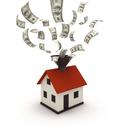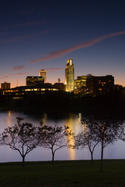It has been ten years since The Not So Big House became a surprise best seller, elevating a successful but unknown Minneapolis-based architect, Sarah Susanka, to the couch of Oprah Winfrey. Shortly after its release, the book became number one on Amazon.com, the force of which wasn’t fully understood or appreciated back in 1998. Since then she’s published five more books in the Not So Big series, but none have benefited as much from pitch-perfect timing. read more »
Urban Issues
Beyond The Bailout: What’s Next in the Housing Market?
The Emergency Economic Stabilization Act of 2008 (we’ll call it the “Bail Out”) was signed into law on October 3rd. This, combined with the new reality in capital markets and current economic conditions, will result in some major shifts in the outlook for housing over the next few years. It is always possible that the federal government will try to do even more to fix what will be an agonizing housing problem over the next few years, but seems unlikely even Bernake, Paulson or their appointed successors will be able to change the basic story line. read more »
The Geography of Inequality
The global financial crisis has drawn greater attention to the world of the super rich and to the astounding increases in inequality since 1980, returning the country to a degree of inequality last seen in 1929 or perhaps even 1913. In the year 2006 alone, Wall Street executives received bonuses of $62 billion. Financial services increased from 10 percent of all business profits in 1980 to 40 percent in 2007, an obscene and indefensible development that now threatens the rest of the ‘real economy’.
Here’s what happened to income and wealth between 1970 and 2005 read more »
Gentrification from the inside out in Brooklyn's Ditmas Park
Twenty some years ago my husband, 2 young sons and I moved from our cramped 16-foot wide attached row house in Brooklyn’s trendy Park Slope to a free-standing, 7-bedroom Victorian house in the Ditmas Park section of Flatbush with stained glass windows, pocket doors, original wood paneling, a back yard, front porch, driveway and 2-car garage in a little-known, tree-lined neighborhood about 10 minutes away – on the other, high-crime side of Prospect Park. Friends thought we’d taken leave of our senses! read more »
Sprawl is ubiquitous, even in my beloved Copenhagen
The year I attended the University of Copenhagen as an undergraduate, I lived in a suburb north of the city and commuted to the central city via bus and rail (the famous S-trains). What a great system, I remember thinking as an impressionable ingénue (you could go anywhere, and trains were on time to the second!). When I returned as a graduate student I lived right in the city center and discovered that great public transit did not obviate the need for extensive walking (I must have worn out five pairs of shoes that year). read more »
The American Dream: Alive and Well (Some Places)
Even after the burst of the housing bubble, the American Dream of home ownership has remained alive in some places. As it turns out the “bubble” was far from pervasive, and as Nobel Laureate Paul Krugman indicated in The New York Times, the housing price increases were largely limited to the areas of the nation with stronger land use regulation.
In all, at the peak of the housing bubble, 46 of 129 US markets had house prices at or below the historic ceiling of three times household incomes (see 4th International Demographia Housing Affordability Survey. Before the bubble, nearly all markets were at or below that norm, but many have risen to double, triple or even more than three times the standard. read more »
California Disconnect: Don’t Get Out the Vote for Congress, State Legislature
Have you heard about the current election season in Los Angeles?
Sure, we’ve all gotten word about the presidential campaign. But how much have you heard about races for the U.S. Congress or State Legislature?
The member of the U.S. House of Representatives who represents my neighborhood is up for re-election, along with his 434 colleagues. So is the fellow who represents me in the California State Assembly—and his 79 colleagues. read more »
- Login to post comments
Neither fish nor fowl: Emerging urban enclaves in inner-ring suburbia
As I was walking my dog the other morning I was struck by the fact that the City of Falls Church, Virginia, the quaintly bucolic suburban “village” to which our family moved in mid-2001, was no longer suburban. It isn’t a city in the proper sense, like Washington, DC or even Alexandria, Virginia, but it is reflective of the trend towards quasi-urban places in the close-in rings – the original turn-of-the-century and pre-Levittown suburbs – enveloping our city cores. read more »
Why Omaha?
I lived in or near cities for 30 years because that’s where the jobs are. I left southwestern Pennsylvania in 1977 as the closing of coal mines and steel mills wrecked the local economy. It cost almost $1,000 per semester to attend the state college, many times that for the state university. There were no opportunities for a young person. I moved to California where residents received free tuition at state universities. I earned 2 college degrees in California and advanced my career from Prudential Insurance through the Federal Reserve Bank and to the Pacific Stock Exchange. read more »
Restless Americans: Migration and Population Change, 2000-2007
Americans may be less mobile than in the past, but millions since 2000 have continued to be on the move, reshaping the landscape and economy of the nation. Three maps will be briefly discussed: one of population change by county, 2000-2007, one of net internal migration by county, and one of net immigration from abroad. We will then focus on the “extremes”, unusually large levels or intensities of net internal migration and of immigration.
Overall population growth read more »






















